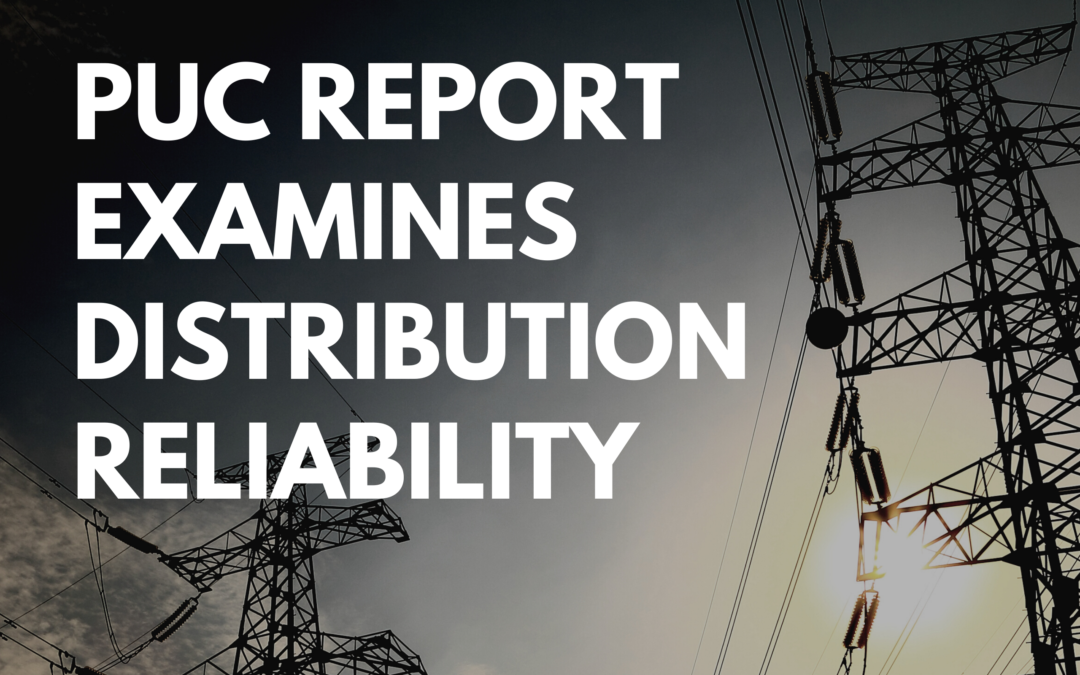The annual PUC report tracks reliability and reliability-related spending by the state’s investor-owned electric utilities with distribution service.
________________________________________________
Oncor Electric, the state’s largest electric transmission and distribution utility, has more than doubled its gross capital expenditures to its distribution system, according to a new report filed with the Texas Public Utility Commission. Oncor’s per-customer spending on gross capital additions similarly increased in recent years, according to the report.
Entitled “Electric Utility Distribution System Spending and Reliability,” the annual PUC report tracks reliability and reliability-related spending by the state’s investor-owned electric utilities with distribution service. The report includes figures and calculations for Oncor and seven other utilities: CenterPoint, El Paso Electric, Entergy Texas, Sharyland, Southwestern Public Service Company, Southwestern Electric Power Company and Texas-New Mexico Power. PUC staff released the report earlier this month.
Oncor holds a position roughly in the middle of the pack as compared to other utilities with regard to the frequency and duration of outages on its distribution system, the report shows. However, the report also includes separate data for the Sharyland distribution system that Oncor acquired in December 2016 — and Sharyland reported comparatively high figures for both the frequency and duration of outages.
 The report benchmarks the frequency of outages through a “System Average Interruption Frequency Index,” or “SAIFI”. SAIFI measures the average number of service interruptions per customer — a figure calculated by summing the number of customers interrupted for each event and dividing that figure by total customers. (All else held equal, lower SAIFI figures indicate better reliability.) The report shows Oncor with an average annual SAIFI value of 1.67 from 2011-2020. However, the utility with the highest annual average SAIFI during the 2011-2020 period was Sharyland, with a score of 3.16. By contrast, the utility with the lowest annual average annual SAIFI was Texas-New Mexico Power, with a .89.
The report benchmarks the frequency of outages through a “System Average Interruption Frequency Index,” or “SAIFI”. SAIFI measures the average number of service interruptions per customer — a figure calculated by summing the number of customers interrupted for each event and dividing that figure by total customers. (All else held equal, lower SAIFI figures indicate better reliability.) The report shows Oncor with an average annual SAIFI value of 1.67 from 2011-2020. However, the utility with the highest annual average SAIFI during the 2011-2020 period was Sharyland, with a score of 3.16. By contrast, the utility with the lowest annual average annual SAIFI was Texas-New Mexico Power, with a .89.
Separately, the report ranks Texas distribution utilities through the “System Average Interruption Duration Index” or “SAIDI”. SAIDI measures the average interruption time on a per-customer basis, and is expressed in minutes. All else equal, a lower SAIDI represents better reliability. Oncor’s average annual SAIDA for the years 2011 through 2020 was 239.96 minutes, while Sharyland’s was 518.79 minutes. The utility with the highest annual average SAIDI was Entergy Texas, with annual average per customer outage time of 704.24 minutes during the survey period. However, much of Entergy’s high SAIDI was the result of damage from Hurricane Harvey. El Paso Electric had the lowest annual average SAIDI, at 85.65 minutes.
The report elsewhere does not include specific numerical values underlying the data points in its various spending and reliability charts. The charts, however, do allow for analyses of broad spending and reliability trends — albeit based on informal estimations of illustrated numerical values.
Report highlights pertaining to Oncor include:
- A chart on page 51 appears to show that ONCOR had SAIDI attributable to “forced” interruptions at a bit less than 100 minutes per customer in 2011. The chart also shows Oncor’s SAIDI number dropping somewhat by 2019, to roughly around 75 minutes. Oncor also reported “forced” SAIFI of approximately .9 in 2011, according to an examination of a separate chart on page 50. By contrast, in 2019 SAIFI attributable to “forced SAIFI” was about .8 per customer. Forced interruptions are those related to equipment failures or human error.
- The report shows Oncor’s expenditures on gross capital additions on its distribution system more than doubling in recent years. From an examination of a chart on page 45, it appears that spending in this category went from between $300 million and $400 million in 2011 to more than $1 billion in 2019. Similarly, gross capital addition spending per distribution customer more than doubled, from a bit more than $100 per customer in 2011 to about $270 in 2020, according to an examination of a separate chart on page 45. These figures exclude spending on meters.
- Oncor distribution operation and maintenance spending (again excluding spending for meters) generally increased between 2011 through 2020 — although the company registered year-to-year declines periodically. Distribution O&M spending in 2011 was slightly above $150 million, according to an examination or a chart on page 48. In 2020, it was slightly above $250 million. On a per customer basis, that spending went from about $50 in 2011, to around $70 in 2020.
- In 2013, Oncor spent approximately $70 million on vegetation management on its distributions system, and in 2019, it spent a bit less than $90 million, according to a chart on page 49. On a per customer annual basis, Oncor spent approximately $22 for vegetation management on its distribution system in 2013, compared to about $23 million in 2020. Those figures include both routine and storm-related vegetation management spending.


